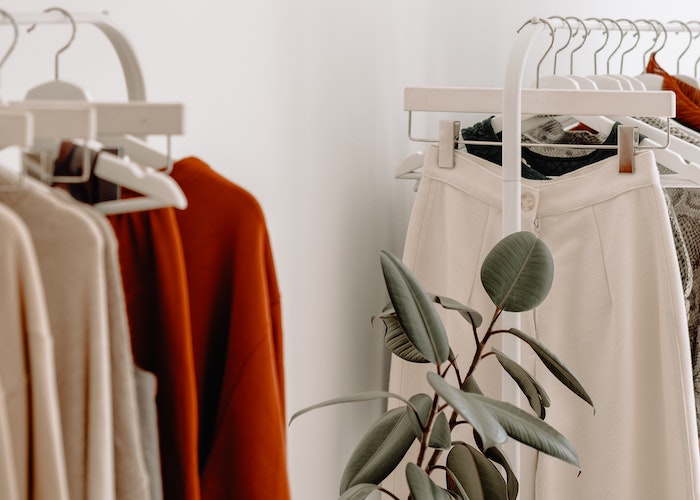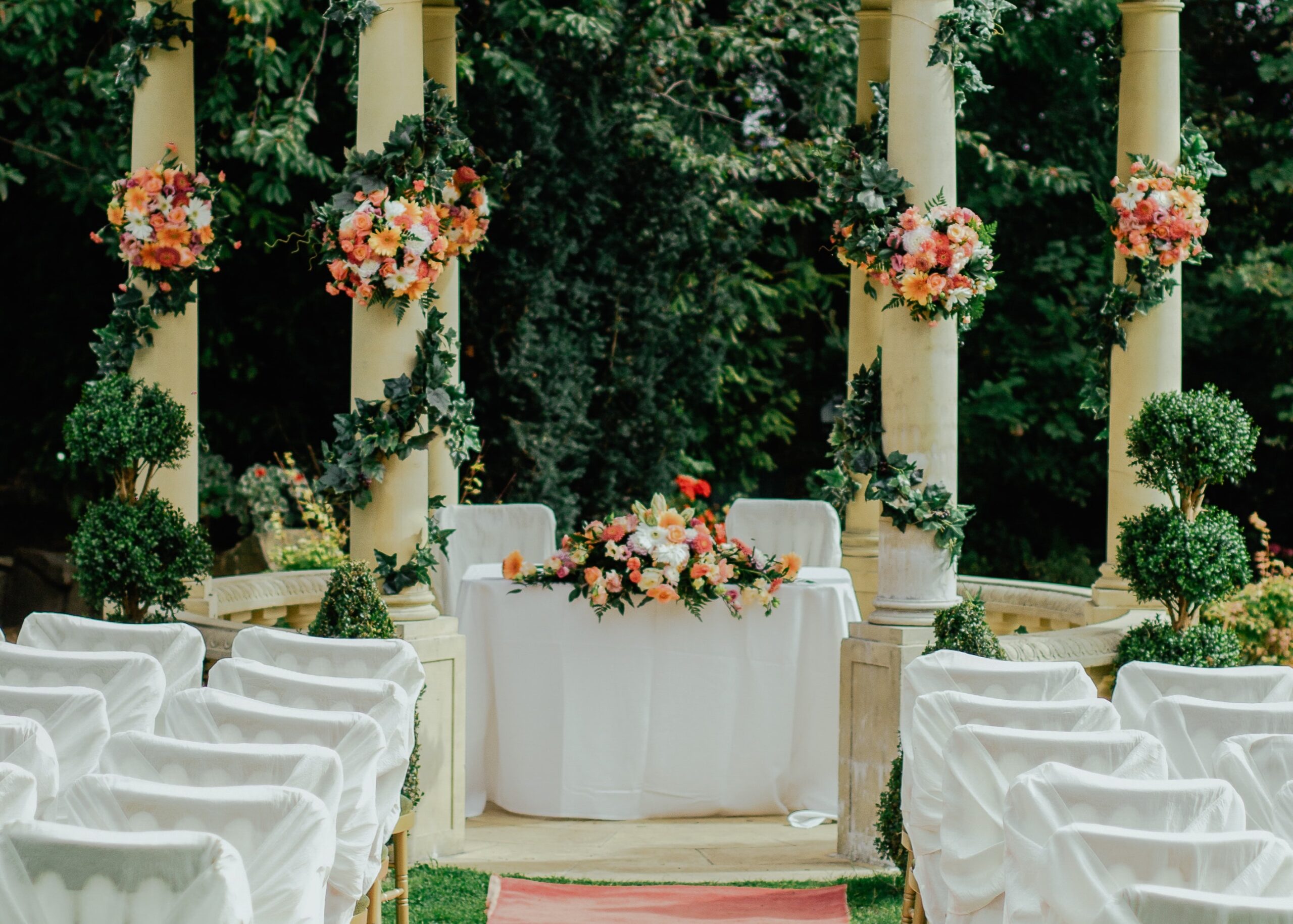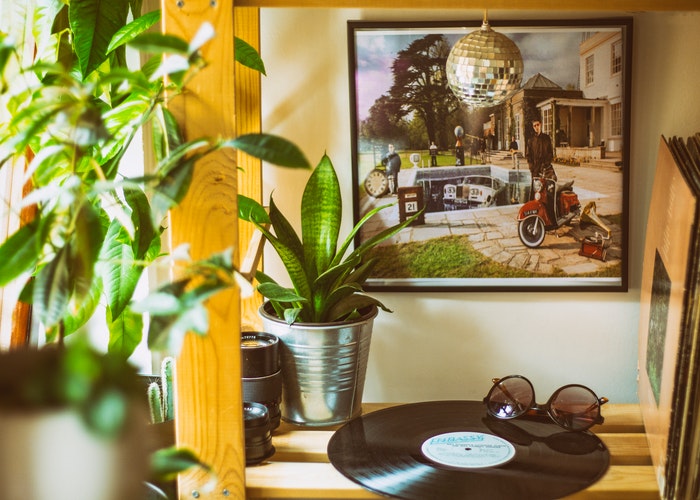4 Rules That Keep My Beauty Spending In Check Without A Strict Budget
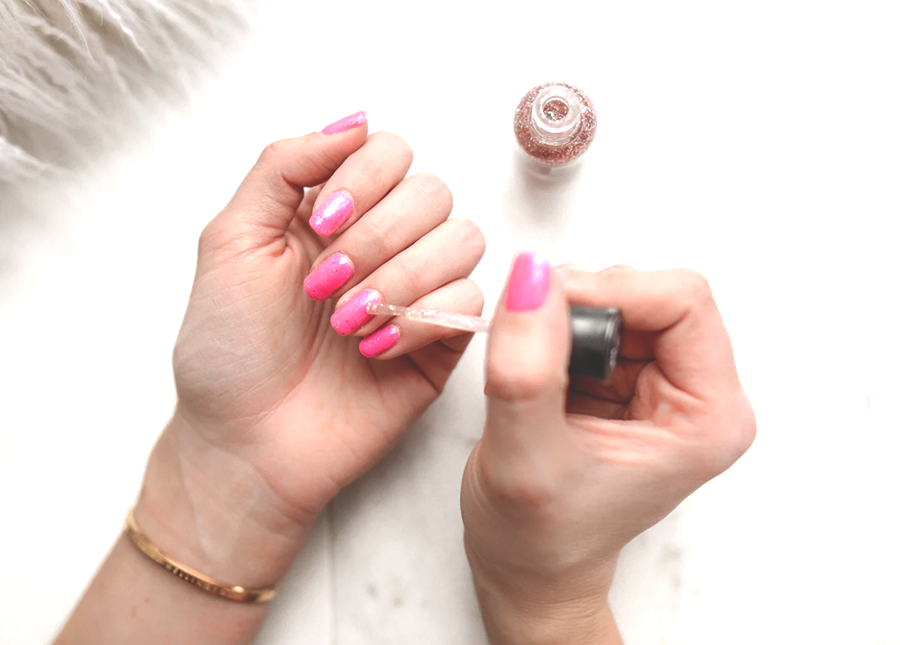
It took me forever to buy a $4.99 Burt’s Bees lip balm. It’s not because I didn’t have the money. Or because I was waiting to find just the right product. No, I have this rule for skincare and makeup: I won’t buy anything new until the current product has been used up. I call it the “Waitlist Strategy,” because I like pretending I’m the Harvard of all prospective beauty product candidates. One can’t come in unless another goes out.
What’s the madness behind this strict policy, you ask. Here, look.
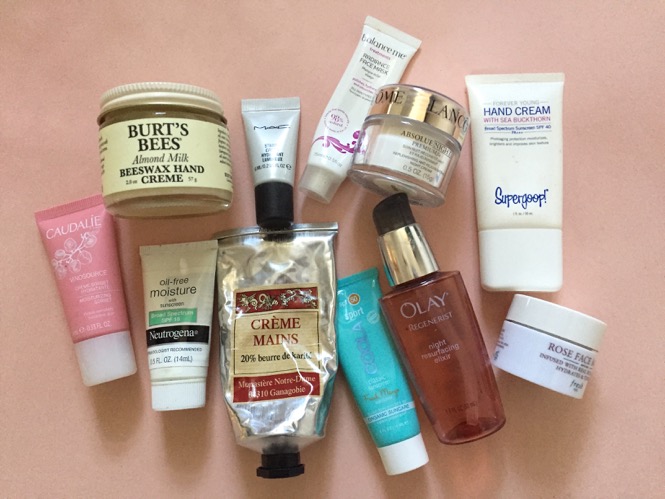
I have so, so much already. And that’s only about half of it. All of these products are currently in my Harvard School of Beauty Products, waiting to graduate. Looking at the pile, and according to my policy, there’s no reason for me to buy any more of the following right now:
- Sunscreens
- Primers
- Hand creams
- Night time moisturizers
And that’s how I ended up taking eight months to buy a $4.99 lip tint from CVS. Because it took me that long to finish using the lip balm I had before.
Waiting eight months to buy an inexpensive product seems a bit excessive. Beauty products are easy to buy — you get tired of using the same one over and over. And what if there’s a better product out there for you? So many to try, so little time. What’s the harm in another $5 product? Not going to lie, they’re fun! These products usually come in devastatingly beautiful packaging, which pulls at my aesthetic’s heartstrings.
Then there’s the promise of a “new and improved” you. Maybe, just maybe, this $50 cream will shrink my pores, even though that’s scientifically impossible. They also seem like small luxuries that won’t kill your budget, because they’re literally small. It’s not like buying an $800 handbag, which is an obvious luxury. But if you think about it, spending $800 on 15 products per year is pretty dang easy. But I try to stay strong. It’s not about the money or the products themselves.
Over time, I’ve added free samples to my shopping cart and bought mini sizes of products I wanted to try. Or I saw some kind of birthday sale happening at Birchbox where a box of trial-sized products cost $10 instead of $20. And over time, this collection of products started to create that thing I hate: CLUTTER.
I knew something was up when I found myself buying one of those nice, acrylic organizers to house all of my products: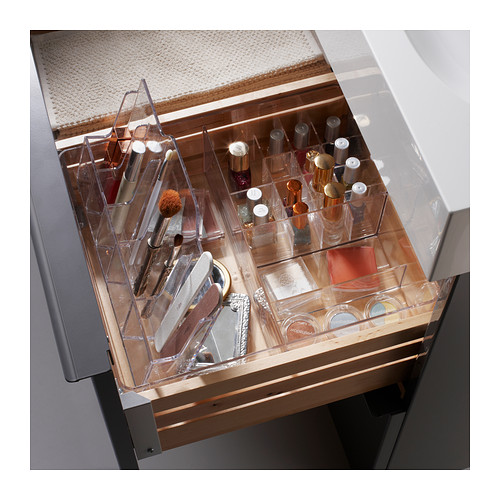
While my products look nice and neat in their new organizer, it’s all for show. I almost never use any of the products I’ve kept in it. It’s because I have more than I actually need.
1. Being Realistic About My Lifestyle AKA Know Thyself
Whenever I buy more storage, whether it’s for clothes or makeup or whatever, that’s a sign to me that I’m buying too much. Don’t get me wrong: If you’ve got the money and your finances are on lock, I’m not gonna judge your spending. If you’re a makeup YouTuber or love to try new looks every day, buying products can make sense for you. But that’s not me. As much as I like looking into people’s medicine cabinets, I’ve never aspired to have a Glossier-esque #topshelfie or anything. And my “look” is exactly the same every day — me, just a little less dead-looking. I’m convinced that eyeshadow just doesn’t look good on me, and no matter how much I try, I’m never gonna reach for a tube of lipstick. Tinted lip balm or bust!
2. I Just Want to Not Get Ripped Off
With beauty, it’s so easy to feel ripped off. When it comes to clothes, I think I have a pretty solid understanding of what’s worth it to me, and what’s not, but with beauty products, I’m a LOT less confident. I’m like a lost little lamb in a sea of words I don’t understand, like “Polypropylene Glycol” and “Dimethicone.” I don’t know much about science. But isn’t the effectiveness of beauty products all about the science? That’s where research comes into play.
3. Research Beauty Products
I’ll check blogger reviews to see how products look on, but it’s hard to compare when they don’t have the same skin tone or skin type as you. I mean, how many times has someone said they had “problem” skin, and they literally have had just one zit their entire lives? I like to understand the science behind the products instead. Let’s face it, a lot of this stuff is pure marketing. There are two websites I’d use:
Beautypedia won me over when they helped me figure out how to put together a skincare routine. Then I found their product reviews that explained why something was effective or not, based on the ingredients. I learned so much! And the good reviews weren’t just given to expensive stuff, but budget-friendly options, too. I used to refuse to buy anything unless I had looked at the verdict on Beautypedia. I’d be standing in an aisle CVS with a ninety-cent eyeliner in my hand, pulling up the corresponding Beautypedia review on my phone. I wouldn’t head to the register unless the product got at least four out of five stars.
But then the founder of the site created her own beauty products brand, Paula’s Choice, and after that, I assumed the reviews were bound to be biased. The other site I’d use, but to a lesser extent, is The Beauty Brains blog, since the advice is given by scientists. Some of the questions are super weird, but some are actually helpful. For example, if you’re curious to know whether natural products are as good as drugstore brands, they’ve got an answer for that.
4. Try Before You Buy
Remember when I told you about how my friends spent forever at Barney’s beauty counter trying out a skin cream, and they still didn’t buy it? $42 on a product is no joke, so if you’re trying to cut back your spending, do your due diligence with samples first. I can’t think of any store that will refuse to give you samples. With beauty products being a bit of a gamble, testing products first is a great way to curb buying more than you need.
So, let’s chat!
When it comes to beauty products, how do you keep your spending in check? Do you have a waitlist policy? Where do you research products before buying? How do you decide whether or not something is worth it?
The Luxe Strategist is a New Yorker saving half of her income. She chronicles her money-saving strategies on her blog.
Image via Unsplash


